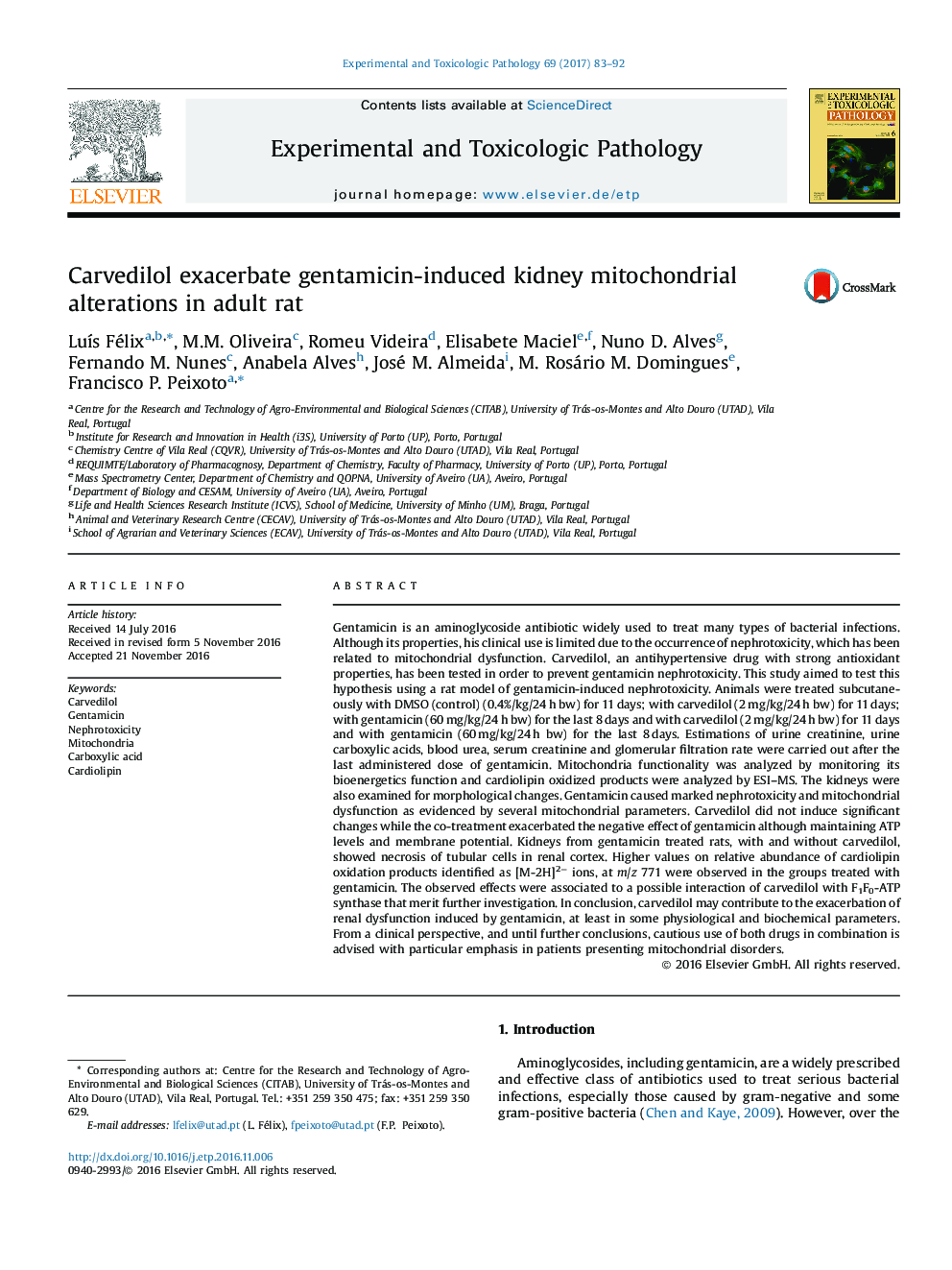| Article ID | Journal | Published Year | Pages | File Type |
|---|---|---|---|---|
| 5549803 | Experimental and Toxicologic Pathology | 2017 | 10 Pages |
Gentamicin is an aminoglycoside antibiotic widely used to treat many types of bacterial infections. Although its properties, his clinical use is limited due to the occurrence of nephrotoxicity, which has been related to mitochondrial dysfunction. Carvedilol, an antihypertensive drug with strong antioxidant properties, has been tested in order to prevent gentamicin nephrotoxicity. This study aimed to test this hypothesis using a rat model of gentamicin-induced nephrotoxicity. Animals were treated subcutaneously with DMSO (control) (0.4%/kg/24Â h bw) for 11Â days; with carvedilol (2Â mg/kg/24Â h bw) for 11Â days; with gentamicin (60Â mg/kg/24Â h bw) for the last 8Â days and with carvedilol (2Â mg/kg/24Â h bw) for 11Â days and with gentamicin (60Â mg/kg/24Â h bw) for the last 8Â days. Estimations of urine creatinine, urine carboxylic acids, blood urea, serum creatinine and glomerular filtration rate were carried out after the last administered dose of gentamicin. Mitochondria functionality was analyzed by monitoring its bioenergetics function and cardiolipin oxidized products were analyzed by ESI-MS. The kidneys were also examined for morphological changes. Gentamicin caused marked nephrotoxicity and mitochondrial dysfunction as evidenced by several mitochondrial parameters. Carvedilol did not induce significant changes while the co-treatment exacerbated the negative effect of gentamicin although maintaining ATP levels and membrane potential. Kidneys from gentamicin treated rats, with and without carvedilol, showed necrosis of tubular cells in renal cortex. Higher values on relative abundance of cardiolipin oxidation products identified as [M-2H]2â ions, at m/z 771 were observed in the groups treated with gentamicin. The observed effects were associated to a possible interaction of carvedilol with F1F0-ATP synthase that merit further investigation. In conclusion, carvedilol may contribute to the exacerbation of renal dysfunction induced by gentamicin, at least in some physiological and biochemical parameters. From a clinical perspective, and until further conclusions, cautious use of both drugs in combination is advised with particular emphasis in patients presenting mitochondrial disorders.
